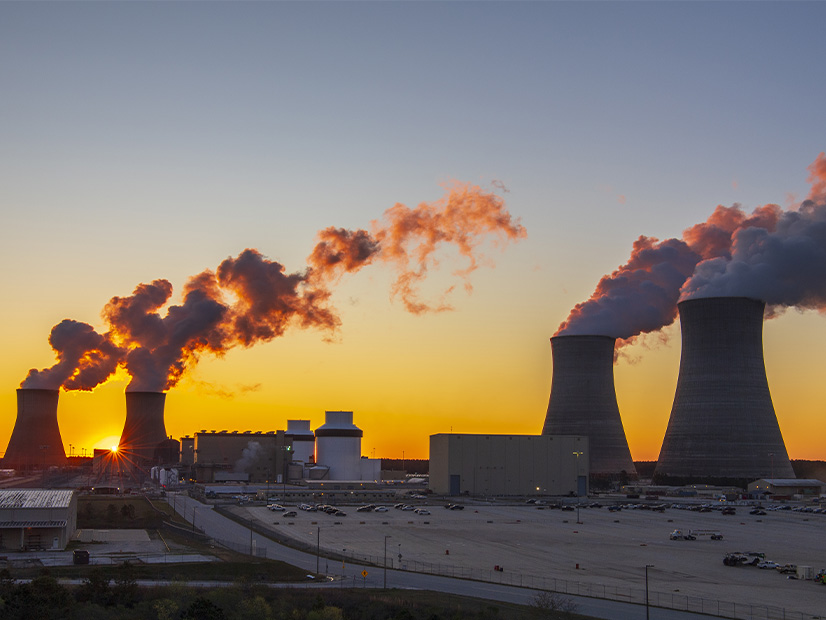
Georgia Power’s 2025 Integrated Resource Plan proposes to uprate four of its nuclear reactors, upgrade a natural gas plant and push back some coal and gas retirements.
Georgia’s largest electric utility said the moves are driven by anticipated demand. It expects 8.2 GW of load growth through the end of 2030 — 2.2 GW more than it projected in its 2023 IRP Update.
Environmental advocates were disappointed by some aspects of the plan, particularly the operating extensions of what Georgia Power called some of the most advanced coal-fired units in the world.
In its Public Service Commission filing (Docket 56002), Georgia Power proposes to address both power demand and supply in its new IRP. It also lays out a 10-year plan to upgrade more than 1,000 miles of transmission lines.
Nuclear is one of the smaller components on the supply side of the strategy.
Georgia Power proposes to increase the thermal output of its Hatch 1 and 2 and Vogtle 1 and 2 reactors to extract a 112-MW increase in capacity from them as soon as late 2028 or early 2029. The four units began commercial operation 36 to 49 years ago.
Proposed upgrades to 10 gas units at Plant McIntosh are projected to yield 268 MW of incremental capacity as early as late 2027.
Investments in nine existing hydroelectric facilities would preserve 665 MW of capacity.
The 2025 IRP also proposes keeping three coal-fired units at Plant Scherer; an oil-burning unit at Plant Gaston; and four gas units with coal-fired backup at Plant Gaston in operation through 2034 to 2038. This would preserve 1 GW of capacity and is a change from the 2022 IRP, which called for their retirement in 2027 and 2028.
Georgia has seen an uptick in manufacturing development in the past four years, and the Census Bureau estimates its population jumped 4.4% from 2020 to 2024, compared with 2.6% nationwide.
Georgia Power CEO Kim Greene alluded to this in a Jan. 31 news release: “The 2025 IRP provides a comprehensive plan to support Georgia’s continued economic growth and serve Georgians with clean, safe, reliable and affordable energy well into the future.”
Some of that economic growth has been in the clean energy sector, boosted by funding during the Biden administration. Environmental activists saw irony in Georgia Power’s proposal to burn more fossil fuel to power these new facilities.
“We’re the number one state to do business and one of the U.S.’s fastest-growing tech hubs. Are we really going to power progress with gas and coal?” Southern Environmental Law Center attorney Jennifer Whitfield asked in a news release. “Coal hasn’t been economic for years, and paying for even more methane gas is incompatible with the future Georgians want and businesses are demanding.”
At the two-year anniversary of the Inflation Reduction Act, nonpartisan business group E2 calculated that Georgia had fared second-best among the states under the IRA: 28 major clean energy or clean vehicle projects carrying an estimated $15.3 billion investment that would create an estimated 15,723 jobs.
Georgia Power predicts the largest components of its summer 2025 generation capacity mix will be 44% gas, 16% coal, 14% solar/storage and 12% nuclear. Its actual energy mix for 2024 was 40% gas, 29% nuclear, 16% coal and 6% solar. In total, 38% of the energy was carbon-free.
